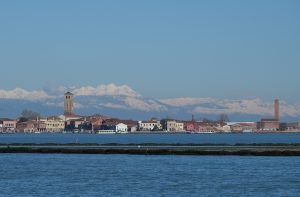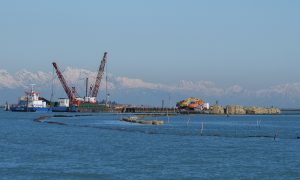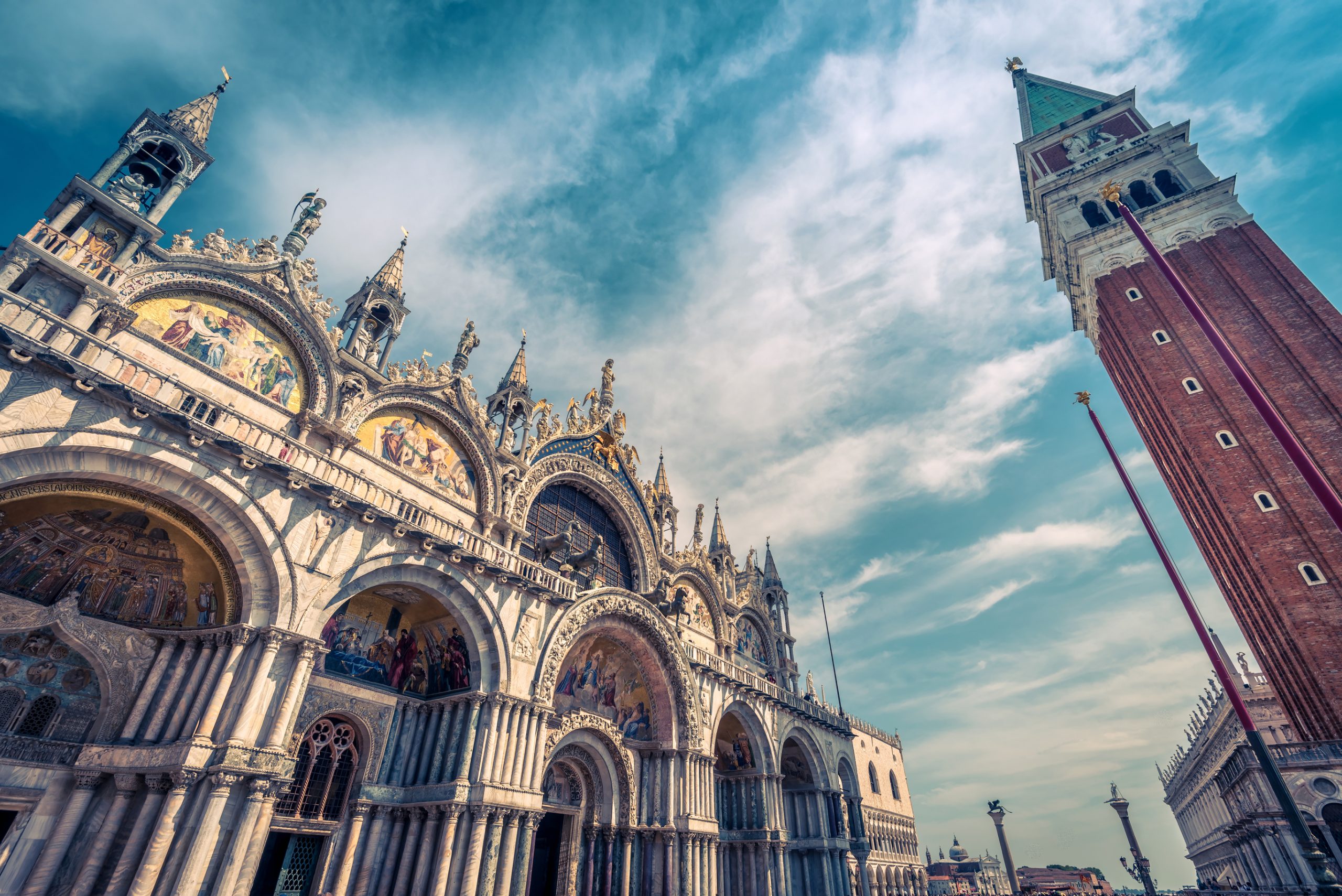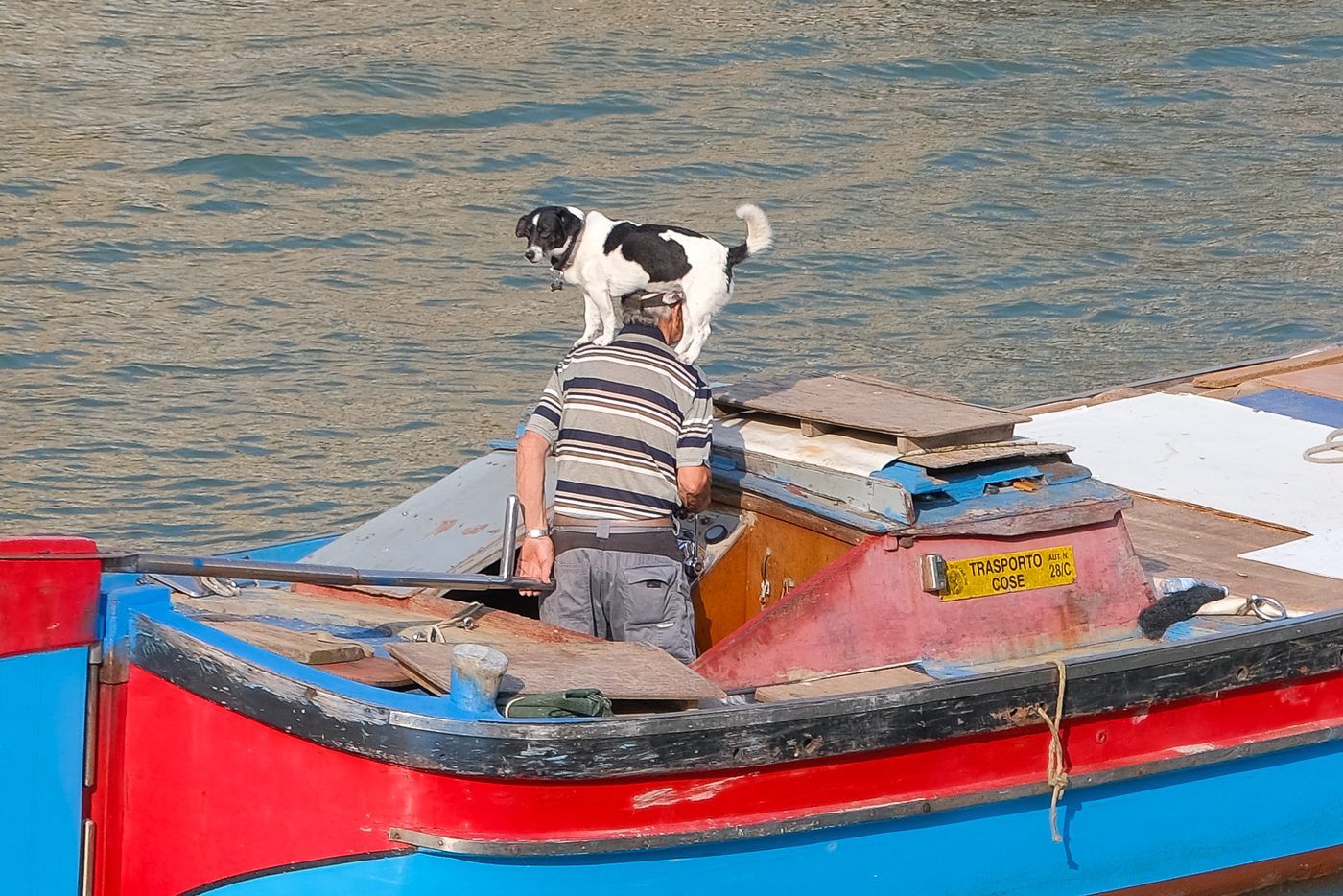The image of a gondola has for over a century been synonymous not only with Venice, but with European tourism in general. None of the continent’s other famous tourist icons—not the Eiffel Tower, not the Colosseum—so succinctly embodies all at once the lure of exotic culture and experience and, yes, comfort that most modern travelers seek in their trips abroad.
But while this famous city of water is now in danger of being overwhelmed by too much of it, by ever more extreme acqua alte and rising sea levels, there have been times in its past when, surprisingly enough, the threat was that it might become landlocked.
In fact, within twenty-five years of gaining independence from Austria in 1866 and becoming part of the newly-formed Italy, there were those who argued that the only path out of the city’s long economic malaise was a radical program of modernization. In 1889 the Venice-based writer Gabriele D’Annunzio made the prediction to a Paris newspaper that “in forty years the Grand Canal will be paved and traversed by trams” (as quoted in Margaret Plant’s book Venice: Fragile City, 1797-1997).

And in 1910 the leader of the Futurist movement, Filippo Tommaso Marinetti, quite literally trumpeted from the grand old clock tower in Piazza San Marco that it was time to “fill in the stinking little canals with the rubble of the tottering infected old palaces” so that Venice could once more become an economic and military force in the Adriatic.
More moderate voices would, fortunately, prevail in those debates about Venice’s future. But more than half a millennium earlier the threat to Venice’s surrounding and protecting waters was much more than simply rhetorical.
The first major city in the Venetian lagoon was not Venice, but Torcello, six miles to the north. The lagoon had kept Torcello’s growing number of residents safely out reach of barbarian hordes on the mainland since the 7th century. But as increased harvesting of timber in the mountains above the lagoon led to more sediment being carried by rivers into the lagoon, the once brackish water around the island of Torcello silted up, becoming a nursery for mosquitoes and malaria. A population that numbered 30,000 in the 12th century was wiped out and the stones of the dying metropolis transported to build anew in the more favorable setting of Venice.
But though it was further from the mainland than Torcello had been, Venice was no more immune to the silting up of its waters than its defunct neighbor. According to John Keahey in his fine book Venice Against the Sea, “one scientist estimates that dry land would have taken over around Venice 500 years ago” had rivers been left to follow their natural routes. This is what happened to Bruges, Belgium, Keahey notes, whose sea inlet connecting the city to the coast became so silted up “that merchant ships could no longer reach the city’s piers” and Bruges’ mastery of North Sea shipping was lost to Antwerp.
This didn’t happen in Venice because beginning in the 14th century and continuing on through the 17th, the Republic began a truly staggering program of diverting no fewer than seven rivers northward and southward around the lagoon. The work was done entirely by hand, by paid laborers during the winter when peasants in the area were available for hire. Today we marvel at Venice’s architectural wonders as we cruise past them in boats, but never think of the perhaps even more extraordinary pre-industrial engineering feats performed by countless laborers and anonymous engineers of diverting rivers 30, 40 or 50 miles to keep the city from being overrun by malaria and/or invaders, and to allow us to this very day our waterborne pleasures.

As dramatic as this human intervention was, though, it did not alter the essential character of the lagoon itself. It was not until the 20th century that human changes to the dimensions of the lagoon, to its inlets from the Adriatic Sea, and to the depth and number of its channels would decisively shift this unique ecosystem from being a shallow marshy mucky mixture of fresh and salt water to an increasingly deep and clean-scrubbed salt water bay.
As Caroline Fletcher and Jane Da Mosto explain in their succinct but thorough book The Science of Saving Venice, this has been destructive not simply because it’s resulted in the loss of “20 percent of the lagoon’s plant and 50 percent of the lagoon’s bird species since 1930,” but because the salt marshes and mud flats once common in the old shallower lagoon “moderated wave energy” coming in from the Adriatic Sea and “used to help to dampen the intensity of acqua alta.”
Of course these days MOSE, the acronym for the massive (and massively expensive) mobile flood gates being built in the three inlets between the Venice lagoon and the Adriatic Sea, is the most famous project to fight acqua alta. But even this latest and most elaborate technological intervention, with the power to stop the sea itself, will not in itself be a solution. On the contrary, because the city’s sewage system of open canals, as well as the health of the lagoon, still depends upon the twice daily changing tides, the billion dollar gates will only be able to be used sparingly, and only when the threats are greatest.
More important on a day-to-day basis are less monumental solutions than MOSE which, though they’re quite visible to visitors circling the city on a vaporetto, are probably hardly ever noticed. One in particular that you might look for the next time you’re in the city is the creation of extensive new mudflats and salt marshes, or barene (in Venetian), in the lagoon around the eastern half of the city. The photo above shows the barges and heavy machinery needed to replicate, using wire cages of rocks and sacks of natural materials, the tide-moderating barene once common in the lagoon. A large completed man-made barena lies just off the vaporetto route near the Ospedale.
At the far extreme from those Venice lovers who gush over it as a dreamy fairy tale city are other people who grouse that it’s nothing but a dead city, a fraudulent tourist trap, a museum. The truth of course lies somewhere in-between. And the fact is that in its centuries-old struggle to strike the perfect balance between human ingenuity and nature this tiny ancient city may yet serve as an example, and even a testing ground, for approaches to problems, such as rising tides, faced by the largest and most important cities in our contemporary world.
For more about living in Venice, visit Steven Varni’s blog: veneziablog.blogspot.com
































